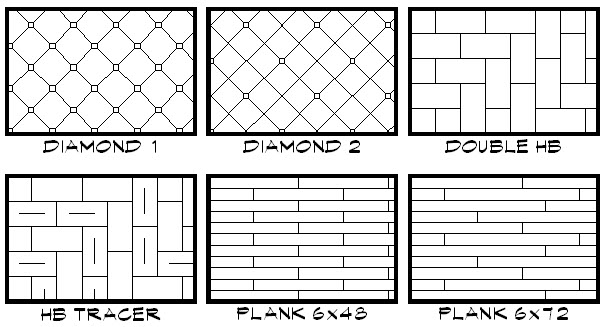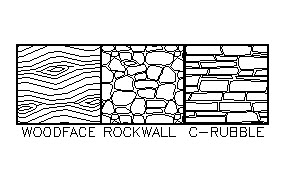

Make any other changes you want to any of the interior vertices of the wood grain. Inside the second rectangle, trim or delete all the wood grain from the upper-left and lower-right quadrants.Ĭopy the trimmed wood grain quadrants to their opposite quadrant in the new rectangle (E.G. Inside the first rectangle, trim or delete all the wood grain from the upper-right and lower-left quadrants. Trim the wood grain and copy the quadrants.

(This is important, because you will be connecting these endpoints later).Ģ copies of everything (rectangle, quadrant lines and wood grain).ġ copy of just the rectangle and quadrant lines. Draw a rectangle and divide it into quadrants.ĭraw polylines across the rectangle to simulate a wood grain.īe sure that the number of endpoints at the top edge is the same as the number of endpoints at the bottom edge, and the number of endpoints at the left edge is the same as the number of endpoints at the right edge. This AutoCAD tutorial is by Autodesk’s own Cliff Young of the AutoCAD Test Development Team. You can create a hatch pattern from most anything without having to learn how to write a hatch pattern definition file. Conversely, entering a very small value results in smooth hatching along arcs but places more of a processing burden during regeneration of a drawing.SUPERHATCH is a former AutoCAD Express Tool that is now included in the core AutoCAD product. Maximum error distance for resolution of arcs:Įntering a large error value results in fewer segments and faster performance, but arcs appear less smooth. (See the Curve Error Tolerance option described in the Dialog Box Options above.) SUPERHATCH lets you to control the precision with which it traverses arc segments by allowing you to specify the maximum distance between the midpoint of any given segment and the arc. SUPERHATCH makes hatching to curved boundaries possible by traversing arc segments with a series of short straight segments. Use TFRAMES to turn on and off the object frames.

Specify an option : Specify an internal point for hatch boundary, or enter A for advanced options, and press Enter Specify block First corner : Specify a tiling (tesselation) frame, and press Enter Specify a window around the block to define column and row tile distances. Rotation angle : Specify the rotation angle Y scale factor (default=X): Specify the Y scale factor X scale factor / Corner / XYZ: Specify the X scale factor Insertion point: Specify an insertion point

Insertion point : Specify an insertion pointīase image size: Width: 1.00, Height: 0.24


 0 kommentar(er)
0 kommentar(er)
